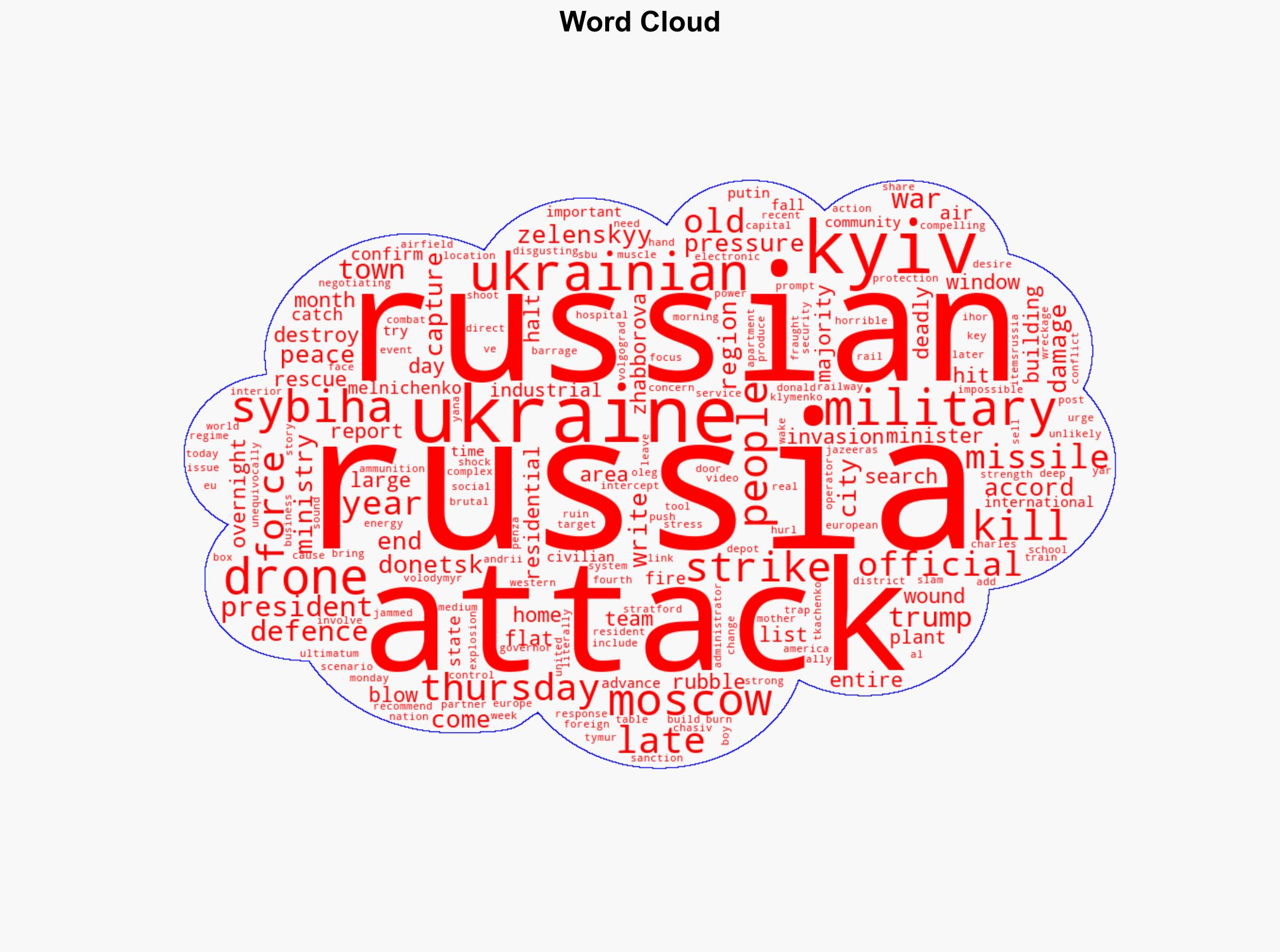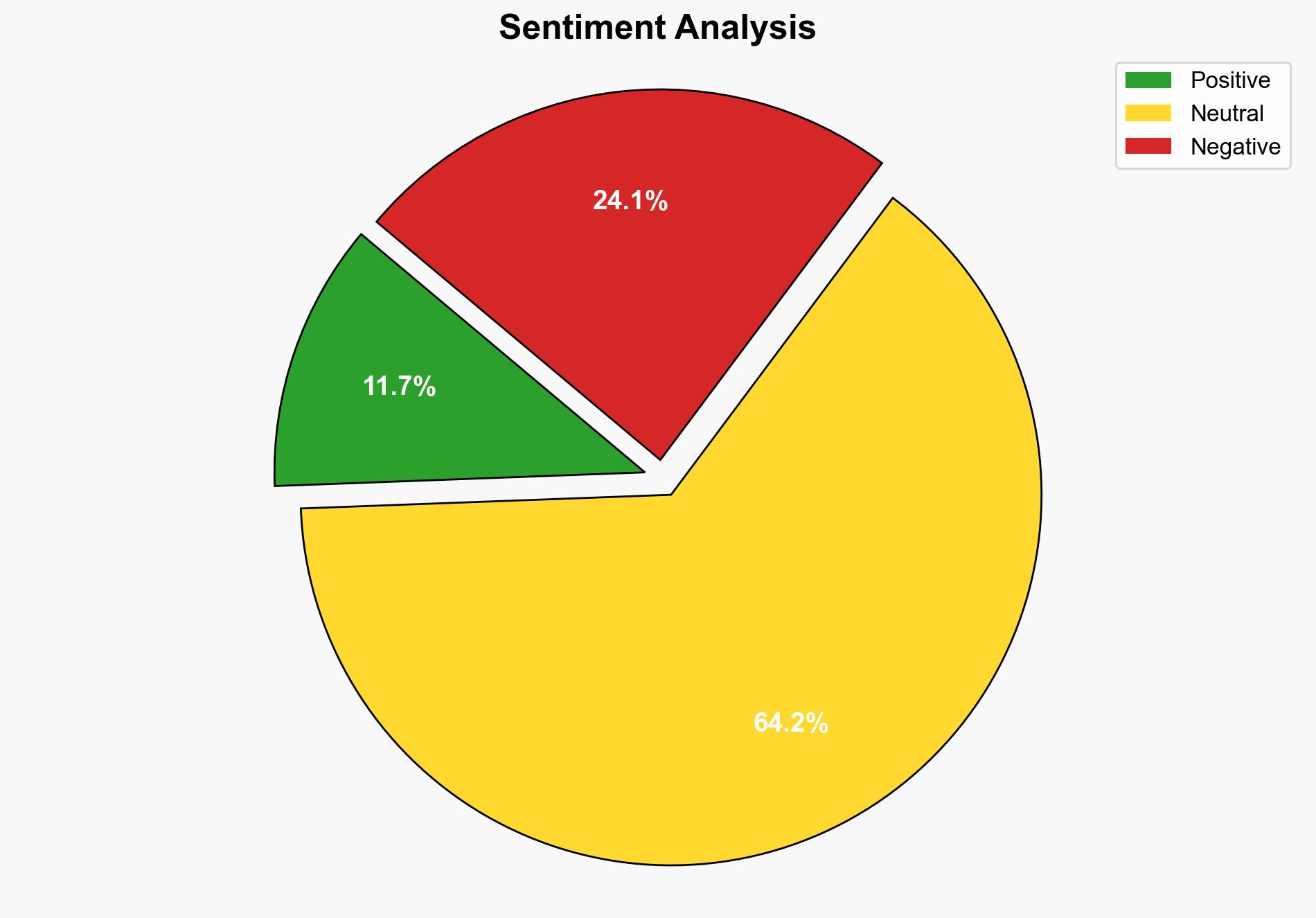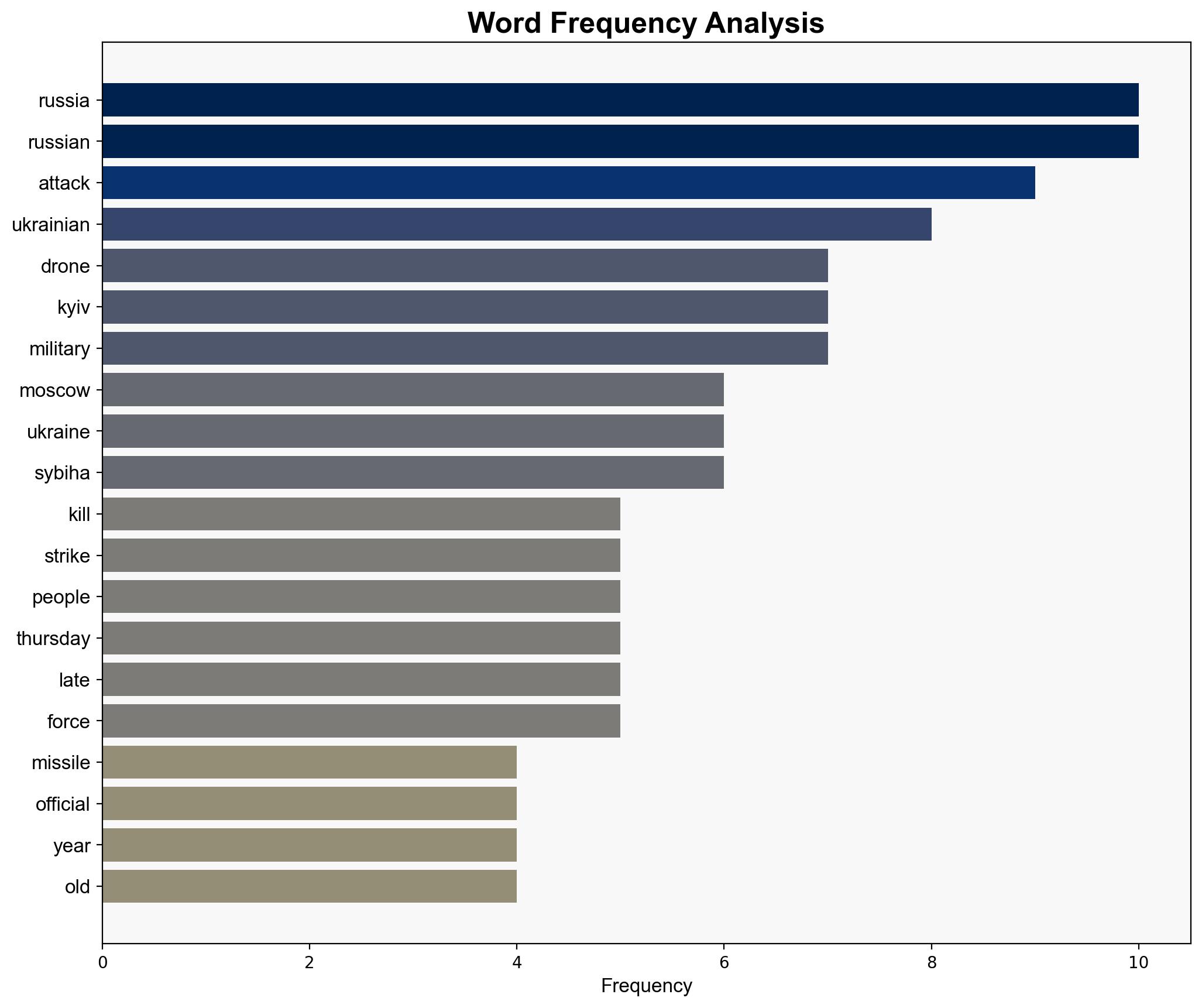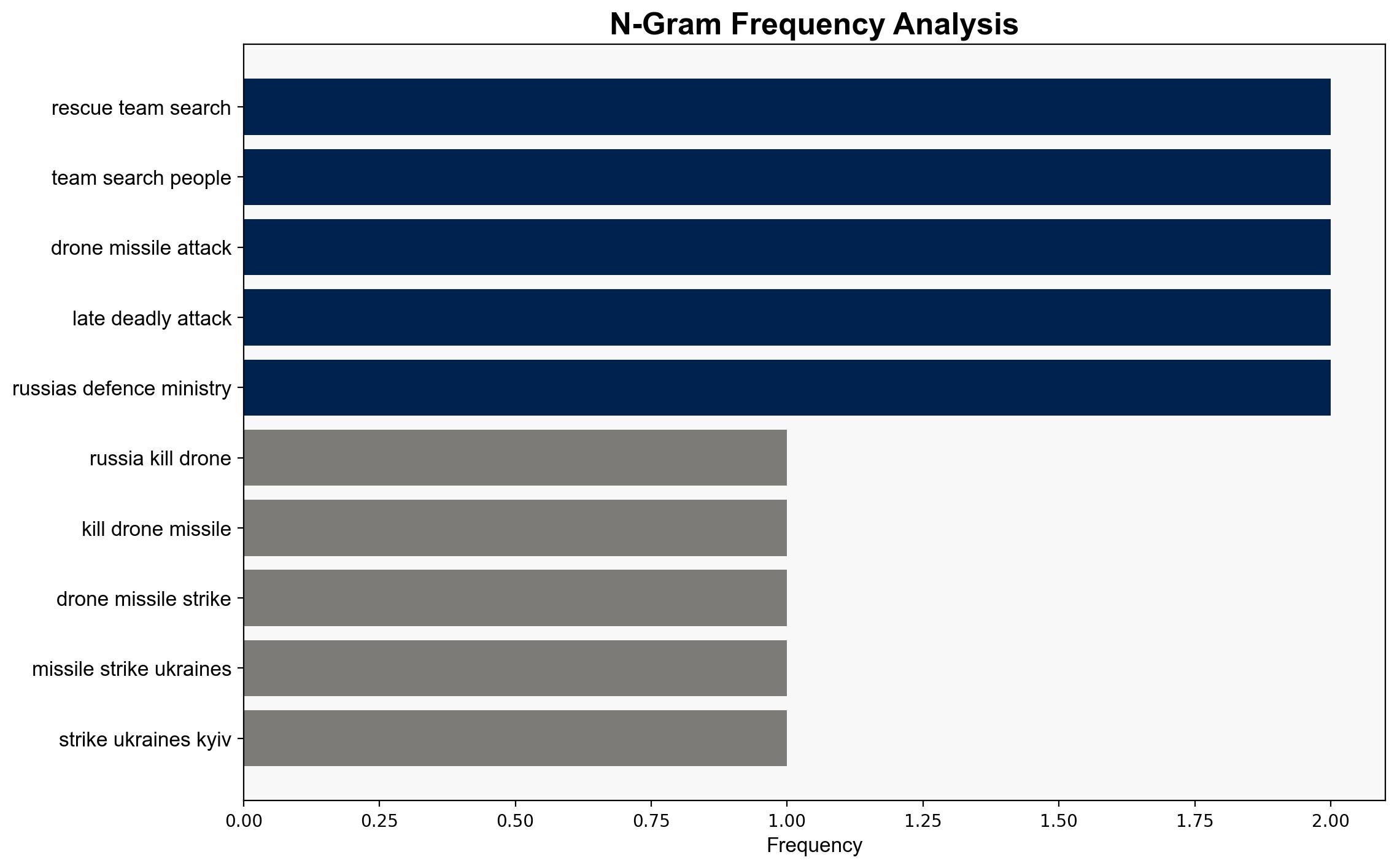Russia kills six in drone missile strikes on Ukraines Kyiv Zelenskyy – Al Jazeera English
Published on: 2025-07-31
Intelligence Report: Russia kills six in drone missile strikes on Ukraines Kyiv Zelenskyy – Al Jazeera English
1. BLUF (Bottom Line Up Front)
The most supported hypothesis is that Russia’s drone and missile strikes on Kyiv are part of a broader strategy to maintain pressure on Ukraine and its allies while testing international responses. Confidence in this assessment is moderate due to the complex geopolitical environment and potential for misinformation. Recommended action is to enhance diplomatic efforts to strengthen international coalitions against Russian aggression and to increase support for Ukraine’s defense capabilities.
2. Competing Hypotheses
1. **Hypothesis A**: The strikes are a calculated escalation by Russia to pressure Ukraine into concessions, leveraging military actions to gain a strategic advantage in negotiations.
2. **Hypothesis B**: The attacks are primarily retaliatory, responding to Ukrainian actions such as drone strikes on Russian territory, aiming to deter further Ukrainian operations.
Using ACH 2.0, Hypothesis A is better supported as it aligns with Russia’s historical use of military force to influence geopolitical negotiations and the timing of the strikes following international diplomatic events.
3. Key Assumptions and Red Flags
– **Assumptions**: It is assumed that Russia’s military actions are directly linked to strategic objectives rather than purely retaliatory motives. Another assumption is that international diplomatic pressure can influence Russian military strategy.
– **Red Flags**: The potential for misinformation or propaganda from both Russian and Ukrainian sources could skew perceptions. The lack of independent verification of the specific targets and outcomes of the strikes is a concern.
4. Implications and Strategic Risks
The continuation of such strikes could lead to further destabilization in the region, potentially escalating into broader conflict involving NATO allies. Economic sanctions may intensify, affecting global markets. Cyber threats could increase as part of hybrid warfare tactics. The psychological impact on civilian populations in Ukraine and neighboring countries could lead to increased refugee flows and humanitarian crises.
5. Recommendations and Outlook
- Enhance intelligence-sharing among allies to counter misinformation and improve situational awareness.
- Increase military aid to Ukraine, focusing on air defense systems to mitigate the impact of future strikes.
- Engage in diplomatic efforts to strengthen international coalitions and apply pressure on Russia through coordinated sanctions.
- Scenario Projections:
- Best Case: Diplomatic efforts lead to a de-escalation and resumption of peace talks.
- Worst Case: Escalation leads to broader regional conflict involving NATO.
- Most Likely: Continued low-intensity conflict with periodic escalations, maintaining pressure on Ukraine and its allies.
6. Key Individuals and Entities
– Volodymyr Zelenskyy
– Tymur Tkachenko
– Andrii Sybiha
– Ihor Klymenko
– Oleg Melnichenko
7. Thematic Tags
national security threats, cybersecurity, counter-terrorism, regional focus





